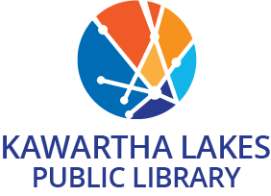|
1860
|
A reading room is established in May 1860 on the north side of Kent Street near York Street. This building would have been lost in the great fire of 1861.
|
|
1863
|
The Lindsay Reading Room is opened in the living quarters at the back of Thomas Beall's store in the "Keenan Block." The reading room is supported by an annual fee of $6 from each of the 130 leading citizens, and remains in operation until 1871.
|
|
1879
|
The first meeting of the Lindsay Mechanics' Institute is held November 24th to establish the Institute.
|
|
1880
|
The Institute moves to the second floor of the old Dominion Bank (current TD Bank.) The Institute provides adult education for young men on technical subjects, and includes evening lectures, lending libraries and reading rooms. Membership is $1 per year in 1894.
|
|
1882
|
The Free Libraries Act gives authority to turn Mechanics' Institutes into Free Public Libraries and also to tax property for the maintenance of free public libraries.
|
|
1889
|
Grand Trunk Railway opens a library on the second floor of the Grand Trunk Station at Durham Street West (at William Street South.) This library remained in operation until the 1920s.The library carried around 1600 volumes alongside periodicals available to railroaders and others for a membership fee of five cents per month. The Grand Trunk Library was one of four such libraries in Ontario and Quebec, the others being located at Belleville, Montreal, and Stratford.
|
|
1893
|
Bylaw No. 663 is to provide for the establishment of a Free Library in the Town of Lindsay.
|
|
1895
|
The provincial government legislates that Mechanics' Institutes transform themselves into public libraries, and as a result the Institute's name changes to Lindsay Public Library.
|
|
1899
|
Citizens of Lindsay vote to make the library free to citizens of the Town of Lindsay, acting under the authority of The Free Libraries Act, 1882.
|
|
1901
|
When word reaches Canada that Andrew Carnegie is granting money for the construction of libraries, an application is sent from the Town of Lindsay.
|
|
1902
|
Carnegie grants $13,500 to build a library for the 7000 citizens with the condition the town will continue to provide funds every year for building maintenance.
|
|
1904
|
The new Carnegie building of the Lindsay Public Library opens.
|
|
1954
|
A group of citizen begin the Lindsay and District Film Council, where members meet at the Lindsay Public Library to watch films and may also borrow a 16mm sound projector, film reels, and a projector screen, all of which were kept at the library.
|
|
1968
|
When the Lindsay and District Film Council dissolves, the library is given the equipment to establish an Audio-Visual Department. Over the next few years, the department expands, adds more films, cassettes, and slides, and loans projectors, cassette players, projection screens.
|
|
1974
|
After a couple decades of stretching beyond the library's maximum capacity for 20,000 books, Lindsay Town Council approves $150,000 in addition to $50,000 already earmarked for an addition to the library on the condition that the Library Board raise $180,000 by grants and public subscription. The addition is paid for by a grant of $325,000 from Ministry of Culture & Recreation, and $162,500 from private donations and public donations from the taxpayers.
|
|
1977
|
Official opening of the new addition on September 16, 1977. One room on the second floor of the new addition opens as the Ethel Flavelle Art Gallery.
|
|
1985
|
The Ethel Flavelle Art Gallery moves out of the library when it merges with Studio 8 Gallery located at 8 Victoria Avenue North.
|
|
1987
|
The Lindsay Public Library selects Munroe Scott to serve as writer-in-residence for one year.
|
|
1988
|
The original portion of the Lindsay Public Library, known as the Carnegie building, including both the exterior and parts of the interior, was approved for protection under the Ontario Heritage Act in March of 1988. Lindsay's Chief Librarian, Moti Tahiliani receives "Outstanding Librarian of the Year" from the Ontario Library Trustees Association.
|
|
1990
|
The Reference Department expands and relocates from the main floor to its current location on the second floor. The card catalogue goes digital and becomes available on computers.
|
|
1992
|
The Lindsay Public Library wins the Canadian Library Association's Meckler Award for Innovative Technology. The annual award is presented to one library in Canada each year. The Lindsay Library won for the state-of-the-art Digital Video Interactive project in the reference department. This project allows users to electronically archive fragile material (documents, photographs, video, audio recordings) onto a computer disk. The project was unveiled in 1991, the only of its kind in Canada.
|
|
1993
|
The Lindsay Public Library opens a Science Department designed to get young people excited about the science and technology. The new department contains science books from the children's department along with telescopes, microscopes, binoculars, science kits and computer programs, all of which could be borrowed. The department presents various workshops on different science topics. For a limited time the Library issues high-tech optical membership cards.
|
|
1994
|
The Lindsay Art Gallery moves into the Lindsay Public Library once again, when its former location on Victoria Avenue North is demolished to build a new police station.
|
|
2001
|
As a result of municipal amalgamation, the Lindsay Public Library merges with the Victoria County Library system to form the Kawartha Lakes Public Library.
|
|
2004
|
Celebration of 100th anniversary of the Carnegie building.
|
|
2005
|
Flood shuts down the branch for several days after heavy rain storm sends water through the roof, streaming down the walls, leaking out of light fixtures, and leaving soaked carpets and a collapsed ceiling tile.
|










